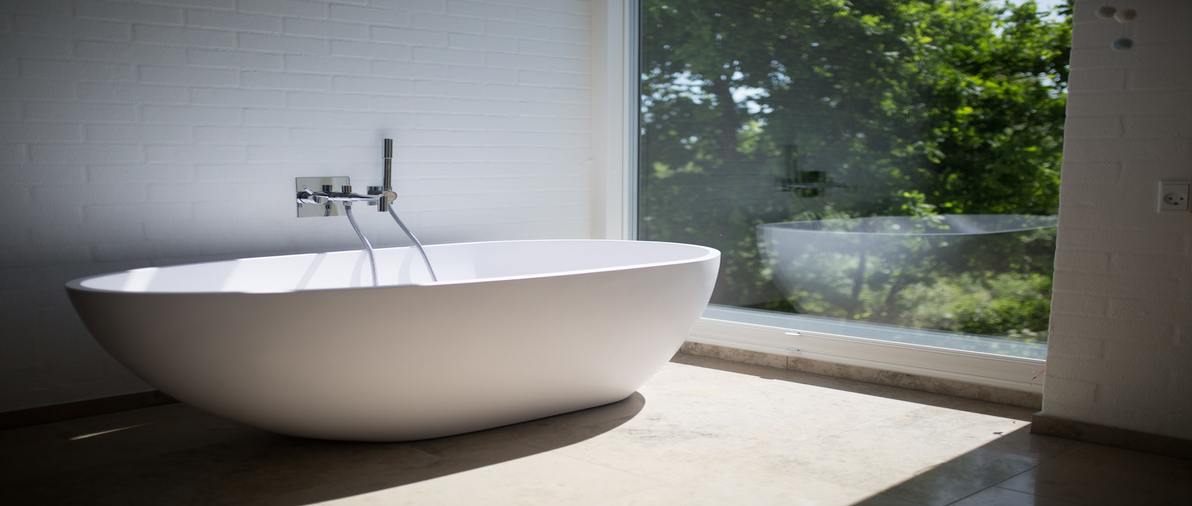
An Interior Designers Guide To Bathtubs and Showers
As everyday objects that are fundamental to everyday life, bathtub and showers can often be taken for granted as design objects. Nevertheless, when expertly detailed, they serve as vital daily retreats for rest and leisure and therefore warrant very careful selection.
“Selecting a bathtub is an extremely important decision. This is because of the amount of space that it consumes and the materials that it uses. Certain parts of a bathtub must be installed very early on before the room is even finished.
But before purchasing any item in our showers and bathtubs category, it's certainly a good idea to talk to your plumber or contractor to see what you'll need to do to install it. You also need to make sure it fits the size of your bathtub or shower enclosure so that you won't have to do additional work to make room for it. To uncover all the key considerations for integrating bathtubs and showers into your next design, just take some simple measurements and here we are with our superior collection of bathtubs and showers.
There are several types of bathtubs in the market yet here we present some of the major ones to consider:
Standard bathtubs
Standard bathtubs are the most common type and the most affordable one. However, it doesn’t possess certain specific features but is a perfect basic and easy to go. These are usually right around the same size, at five feet long, 30” wide, and 14-16” high. These come in a few different installation options, including alcove, drop-in, and freestanding.
Freestanding bathtubs
Freestanding tubs square measure designed to not have any sides put in on a wall. Instead, they stand either on foot, like clawfoot tubs or on a base designed to support the tub’s full weight. These take up extra space than most of the opposite tub installation choices since the square measure isn’t tucked into a corner or area within the same manner that inbuilt tubs are.
Alcove bathtubs
Alcove bathtubs usually come in a combination of tub and showers. Alcoves are the simplest and most common models to buy and install. Alcove bathtubs work into a three-walled enclosure that makes them a good selection if you're attempting to optimize house. The front facet is then finished mistreatment Associate in nursing integral tub apron. The quality length for an Alcove tub is 60-inches, however, models vary anyplace from fifty-three to 72-inches.
Sunken bathtubs
Reminiscent of outdoor swimming pools and spas, a sunken bathtub is born into the ground instead of extruding from or being mounted on high of it. The outer profile of the bathtub is totally hidden, that means that solely the rim is left exposed.
Drop-in bathtubs
These are also called platform bathtubs that provide only the basic shell of the tub. To install, they are required to place them into a frame that’s designed to match the room around the bathtub; as they don’t have polished sides.
SHOWER OPTIONS
Mixer showers
Mixer showers use hot and cold water supplies, mixing the water in the unit as it leaves the showerhead. These are suited to homes with a combo-boiler or large hot-water cylinder as they rely on readily available hot water. A pump can be added in cases of low water pressure.
Electric showers
Electric showers heat water on demand, taking it from the mains cold water and spending it over an element within the shower unit. On the other side, you will not run out of plight with an electric shower and that they heat water as required thus there's no wastage or storage that affects overall energy potency.
Power showers
As electric showers, power showers also heat cold water based on demand. The main difference is that power showers include an integrated pump to boost the flow rate. It is important to keep in mind that power showers typically use 3-5 times more water than electric showers.
Digital showers
Digital showers will be controlled by a panel set anyplace among a 10-metre radius of the shower. The panel then communicates with the facility unit, set either within the loft or closet, to regulate the flow and temperature of the water.
Water at a most well-liked temperature is then delivered through the ceiling or wall to the nozzle, and there's no ugly plumbing visible. They will come back as electrical or mixer variations and be operated by remote.
ADA compliant showers
An ADA compliant shower is a wheelchair roll-in shower and a transfer shower; both types must feature a 36 by 36-inch clearance space around.
We hope the above article helped you to choose your style and set the trend with us.

